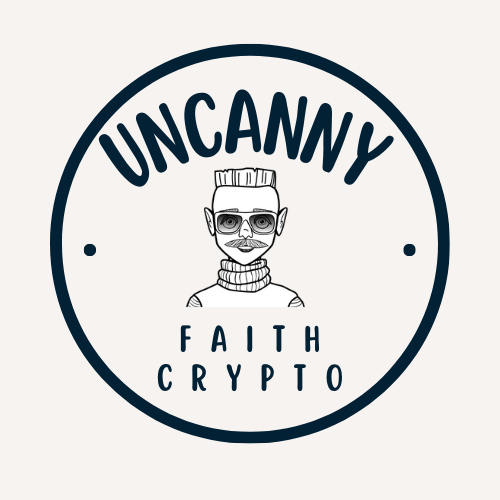In the rapidly evolving world of blockchain technology, Ethereum remains one of the most innovative and foundational platforms. As the first blockchain to introduce smart contracts, Ethereum opened up a universe of possibilities for decentralised applications (DApps) and financial systems. However, to truly grasp Ethereum’s potential, one must understand how the network is continuously evolving to meet the needs of its users. For blockchain enthusiasts, businesses, and developers alike, keeping up with Ethereum’s roadmap is essential to fully harness its power.
In this article, we’ll explore Ethereum’s evolving roadmap and dive into the key features of the latest update, unpacking what these changes mean for the broader ecosystem and beyond. With a conversational tone and a professional lens, let’s take a deep dive into how Ethereum is shaping the future of blockchain.
What Is Ethereum’s Roadmap—and Why Does It Matter?
To understand Ethereum’s roadmap, think of it as the platform’s strategic blueprint—an ongoing plan that helps Ethereum adapt, scale, and meet its ambitious goals. Ethereum was designed to be more than just a cryptocurrency (like Bitcoin); it’s an entire ecosystem that facilitates smart contracts, decentralised finance (DeFi), and much more.
Still, Ethereum is not without its challenges. Scalability issues, high transaction fees, energy inefficiency (prior to the shift to Proof of Stake), and network congestion have plagued the platform in its early years. However, the Ethereum Foundation—the main body behind its development—has been steadfast in introducing continuous updates to address these issues. Each step represents a small yet monumental change on its path to becoming the most scalable, secure, and efficient decentralised platform on the planet.
Ethereum’s Current Phase: A Quick Recap
If you’ve been paying attention, you already know that Ethereum 2.0 (now referred to simply as "The Merge") was the project’s most transformational upgrade to date. Officially completed in September 2022, Ethereum transitioned from its energy-intensive Proof of Work (PoW) consensus mechanism to the more sustainable Proof of Stake (PoS).
But The Merge was only the first stage of Ethereum’s long-term vision. Vitalik Buterin (Ethereum co-founder) and the Ethereum Foundation have outlined several crucial phases on Ethereum’s roadmap, often referred to as the “Surge,” “Scourge,” “Verge,” “Purge,” and “Splurge”. While these names might sound unconventional, they represent key stages in Ethereum’s evolution. Let’s break them down to better understand the journey so far.
1. The Merge: Reducing Energy Consumption
- Transition to Proof of Stake ✅
- Cut energy consumption by 99.95%.
- Introduced staking, allowing holders to earn rewards while securing the network.
This move was a milestone, aligning Ethereum with global sustainability goals while making the network more secure against malicious attacks.
2. The Surge: Scalability Through Sharding
This phase aims to solve Ethereum’s scalability problems.
- Introduces sharding, a method of splitting the blockchain into smaller segments to process transactions faster and more efficiently.
- Together with rollups (Layer 2 solutions), sharding could help Ethereum handle tens of thousands of transactions per second (TPS), a stark improvement over the current 15-30 TPS.
3. The Scourge: Tackling MEV (Maximal Extractable Value)
The focus here is on fairness.
- Aims to reduce manipulation during transaction inclusion in blocks to prevent miners or validators from unfairly extracting profits.
- Ensures more equitable access to the network, benefiting users and developers alike.
4. The Verge: Enter Verkle Trees
If you’re into the nitty-gritty of blockchain mechanics, you’ll appreciate this update.
- Verkle Trees will be introduced, improving the way Ethereum stores data on the blockchain.
- Provides better compression, allowing nodes to operate more efficiently and reducing hardware requirements for validators.
5. The Purge: Cutting the Fat
- Simplifies the blockchain by removing unnecessary historical data.
- Reduces storage costs and improves network performance.
6. The Splurge: Fine-Tuning the Network
Essentially the “clean-up” phase.
- Focuses on improving Ethereum’s features to make the network fully optimised and user-friendly.
Ethereum’s Latest Update: What’s New?
The most recent developments on Ethereum’s roadmap are centred on The Surge and The Verge. These two phases represent groundbreaking strides forward for scalability and efficiency. Here are the most exciting features of the latest update—and what they mean for you.
1. Shanghai/Capella (Shapella) Upgrade: Unleashing Staked ETH
One of the most eagerly anticipated updates has been the Shapella upgrade. This update, rolled out in early 2023, enables Ethereum users to withdraw their staked ETH, offering unprecedented liquidity to investors and allowing people to recover their assets without lengthy lockup periods.
Why It Matters:
- Greater Accessibility for Stakers: No more uncertainty about when you can access your staked funds.
- Increased Staking Participation: User-friendly staking mechanisms can attract more participants, driving further decentralisation.
2. Proto-Danksharding: Turbocharging Scalability
Although full sharding is not yet implemented, the latest update introduces its precursor, proto-danksharding (or EIP-4844). This helps with scalability by lowering transaction costs for Layer 2 rollups, which are vital for improving Ethereum’s speed and efficiency.
Why It Matters:
- Transaction fees on Ethereum have long been a pain point; proto-danksharding paves the way for more affordable transactions.
- This innovation is a step toward Ethereum handling mass adoption without bottlenecks.
3. Boosting Security with Verkle Trees
As Ethereum inches closer to the “Verge” phase, Verkle Trees have become a major point of focus. The cryptographic structure improves data accessibility on-chain while reducing network overhead.
Why It Matters:
- A more efficient blockchain means faster syncing for nodes, making Ethereum more decentralised by lowering barriers for running a full node.
4. Advances in Account Abstraction
Account abstraction continues to take shape, allowing for “smart accounts” that make interacting with Ethereum more intuitive. Features like multi-signature setups, secure wallets, and single-click transactions could change the way users interact on the blockchain.
Why It Matters:
- Brings blockchain closer to mainstream adoption by making wallets and transactions simpler for non-technical users.
- Ensures greater security for both developers and end-users.
What These Changes Mean for Developers, Businesses, and Users
As Ethereum transforms, the benefits ripple across different stakeholder groups:
- Developers: Scalability improvements reduce costs and latency for building DApps, while protocol upgrades like proto-danksharding offer tooling for efficiency.
- Businesses: Lower fees and faster transactions improve the feasibility of blockchain for real-world applications such as supply chain management and financial settlements.
- Users: Ethereum is becoming simpler and cheaper to use, bringing it one step closer to mainstream adoption for everything from DeFi to NFTs.
FAQs: Everything You Need to Know
1. What is Ethereum’s ultimate vision?
Ethereum aims to become a highly scalable, sustainable, and secure “world computer,” supporting a decentralised economy.
2. When will Ethereum fully implement sharding?
Full sharding is expected to roll out in the next few years, with proto-danksharding already making significant progress.
3. How does Proof of Stake change Ethereum?
Proof of Stake drastically reduces energy consumption, increases security, and introduces staking rewards for ETH holders.
4. Why should I care about Ethereum’s roadmap?
Ethereum drives innovation across multiple industries. Whether you’re an investor, developer, or enthusiast, understanding the roadmap reveals how the platform plans to solve key challenges.
Conclusion
Ethereum’s evolving roadmap showcases a determined effort to solidify its position as a leader in blockchain technology. Its push toward scalability, usability, and sustainability reflects the platform’s commitment to solving real-world problems. As we watch Ethereum evolve, one thing remains clear: its potential knows no bounds.
So, whether you’re a developer building the next generation of DApps, a business hoping to harness the power of blockchain, or a casual user exploring crypto, Ethereum’s latest updates bring us one step closer to a decentralised future.
Stay tuned, because the best is yet to come.
Want to learn more? Explore our detailed guides on staking, DeFi, and Layer 2 solutions to dive deeper into the Ethereum ecosystem.

